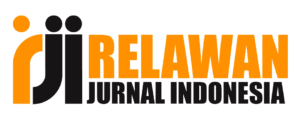Bioremediations Technologies on Wastewater Treatment: Opportunities, Challenges and Economic Perspective
DOI:
https://doi.org/10.31851/sainmatika.v17i2.5085Keywords:
bioremediation, wastewater treatment, biological treatmentAbstract
Bioremediation is one of high value and low-cost technologies to solve environmental degradation. In this paper, we made a systematic review of bioremediation utilization for wastewater treatment. This paper aims to describe the current bioremediation technologies, potential microorganisms involved, recent bioremediation treatment research to solve environmental damage and economic comparation of bioremediations processes. The regulatory of heavy metals limitation in drinking water is also reported in this paper. Thus, this paper described comprehensive information on bioremediation in the world and this future research direction.
References
Adams, G. O., Fufeyin, P. T., Okoro, S. E., & Ehinomen, I. (2015). Bioremediation, Biostimulation and Bioaugmention: A Review. International Journal of Environmental Bioremediation & Biodegradation, 3(1), 28–39. https://doi.org/10.12691/ijebb-3-1-5
Adriano, D. C. (2001). Arsenic. In Trace Elements in Terrestrial Environments (pp. 219–261).
Banik, S., Das, K., Islam, M., & Salimullah, M. (2014). Recent Advancements and Challenges in Microbial Bioremediation of Heavy Metals Contamination. JSM Biotechnology & Biomedical Engineering, 2(1), 1035.
Bwapwa, J. K., Jaiyeola, A. T., & Chetty, R. (2017). Bioremediation of acid mine drainage using algae strains : A review. South African Journal of Chemical Engineering, 24(April), 62–70. https://doi.org/10.1016/j.sajce.2017.06.005
Channel, B., Giarratano, E., Amin, O. A., Conicet, C., Houssay, A. B., Ushuaia, V., & Fuego, T. (2010). Ecotoxicology and Environmental Safety Heavy metals monitoring in the southernmost mussel farm of the world. Ecotoxicology and Environmental Safety, 73(6), 1378–1384. https://doi.org/10.1016/j.ecoenv.2010.06.023
Chen, Y., de Oliveira, L. M., da Silva, E. B., Dong, X., Ma, L. Q., & Li, H. (2017). Mechanisms of metal sorption by biochars: Biochar characteristics and modifications. Chemosphere, 178, 466–478. https://doi.org/10.1016/j.chemosphere.2017.03.072
Drewes, E., Grassmann, J., Stadlmair, L. F., & Letzel, T. (2018). Chemosphere Enzymes in removal of pharmaceuticals from wastewater : A critical review of challenges , applications and screening methods for their selection. Chemosphere, 205, 649–661. https://doi.org/10.1016/j.chemosphere.2018.04.142
Goltapeh, E. M., Danesh, Y. R., & Varma, A. (2013). An Introduction to Bioremediation. In Soil Biology (Vol. 32, Issue January 2013, pp. 203–226). https://doi.org/10.1007/978-3-642-33811-3
Hatzinger, P. B., Whittier, M. C., Arkins, M. D., Bryan, C. W., & Guarini, W. J. (2002). In-situ and ex-situ bioremediation options for treating perchlorate in groundwater. Remediation, 12(2), 69–86. https://doi.org/10.1002/rem.10026
He, Y., Wang, X., Aulenta, F., & Esteve-nú, A. (2020). Environmental Science and Ecotechnology Microbial electrochemistry for bioremediation. 1(January). https://doi.org/10.1016/j.ese.2020.100013
Hunkeler, D., Höhener, P., & Zeyer, J. (2002). Engineered and subsequent intrinsic in situ bioremediation of a diesel fuel contaminated aquifer. Journal of Contaminant Hydrology, 59(3–4), 231–245. https://doi.org/10.1016/S0169-7722(02)00059-1
Jasmin, M. Y., Syukri, F., Kamarudin, M. S., & Karim, M. (2020). Potential of bioremediation in treating aquaculture sludge: Review article. Aquaculture, 519, 734905. https://doi.org/10.1016/j.aquaculture.2019.734905
Jones, S. C., & Wilson, K. C. (1993). Bioremediation of soil contaminated with polynuclear aromatic hydrocarbons (PAHs): A review. Environmental Pollution, 81(3), 229–249.
Karigar, C. S., & Rao, S. S. (2011). Role of microbial enzymes in the bioremediation of pollutants: A review. Enzyme Research, 2011(1). https://doi.org/10.4061/2011/805187
Kravchenko, J., Darrah, T. H., Miller, R. K., & Lyerly, H. K. (2014). A review of the health impacts of barium from natural and anthropogenic exposure. Environmental Geochemistry and Health, 34(4), 797–814. https://doi.org/10.1007/s10653-014-9622-7
Loehr, B. R. C., Smith, J. R., & Corsi, R. L. (2001). and Svoc E Missions From S Lurry and S Olid P Hase. Practice Periodical of Hazardous, Toxic and Radioactive Waste Management, 5(4), 211–224.
Martin, S., & Griswold, W. (2009). Human Health Effects of Heavy Metals. Nd Technology Briefs for Citizens Page 1 Environmental Science and Technology Briefs for Citizens, 15, 1–6.
Megharaj, M., Ramakrishnan, B., Venkateswarlu, K., Sethunathan, N., & Naidu, R. (2011). Bioremediation approaches for organic pollutants: A critical perspective. Environment International, 37(8), 1362–1375. https://doi.org/10.1016/j.envint.2011.06.003
Men, C., Liu, R., Xu, L., Wang, Q., Guo, L., Miao, Y., & Shen, Z. (2019). Source-specific ecological risk analysis and critical source identification of heavy metals in road dust in Beijing, China. Journal of Hazardous Materials, 377, 1–42. https://doi.org/10.1016/j.jhazmat.2019.121763
Mendoza, R. N., Medina, T. I. S., Vera, A., Rodriguez, M. A., & Guibal, E. (2007). Study of The Sorption of Cr(Iii) With XAD-2 Resin Impregnated with DI-(2,4,4 Trimethylpentyl)Phosphinicacid (Cyanex 272). Solvent Extraction and Ion Exchange, 18(2), 37–41. https://doi.org/10.1080/07366290008934684
Menendez-Vega, D., Gallego, J. L. R., Pelaez, A. I., Fernandez de Cordoba, G., Moreno, J., Muñoz, D., & Sanchez, J. (2007). Engineered in situ bioremediation of soil and groundwater polluted with weathered hydrocarbons. European Journal of Soil Biology, 43(5–6), 310–321. https://doi.org/10.1016/j.ejsobi.2007.03.005
Naswir, M., Arita, S., Hartati, W., Septiarini, L., Desfaournatalia, D., & Wibowo, Y. G. (2019). Activated Bentonite: Low Cost Adsorbent to Reduce Phosphor in Waste Palm Oil. International Journal of Chemistry, 11(2), 67. https://doi.org/10.5539/ijc.v11n2p67
Oya, N., Keskin, S., Celebioglu, A., Sarioglu, O. F., Uyar, T., & Tekinay, T. (2017). Encapsulation of Living Bacteria in Electrospun Cyclodextrin Ultrathin Fibers for Bioremediation of Heavy Metals and Reactive Dye from Wastewater. Colloids and Surfaces B: Biointerfaces, 161, 169–176. https://doi.org/10.1016/j.colsurfb.2017.10.047
Peruchi, L. M., Fostier, A. H., & Rath, S. (2015). Sorption of norfloxacin in soils: Analytical method, kinetics and Freundlich isotherms. Chemosphere, 119, 310–317. https://doi.org/10.1016/j.chemosphere.2014.06.008
Ram, C. A., Prado, A., Arias, C. A., Esteve-n, A., & Brix, H. (2018). Microbial Electrochemical Technologies for Wastewater Treatment : Principles and Evolution from Constructed Wetlands. Water, 10(1128), 1–29. https://doi.org/10.3390/w10091128
Rayu, S., Karpouzas, D. G., & Singh, B. K. (2012). Emerging technologies in bioremediation : constraints and opportunities. Biodegradation, 23, 917–926. https://doi.org/10.1007/s10532-012-9576-3
Ron, E. Z., & Rosenberg, E. (2014). Enhanced bioremediation of oil spills in the sea. Current Opinion in Biotechnology, 27, 191–194. https://doi.org/10.1016/j.copbio.2014.02.004
Saini, A., Bekele, D. N., Chadalavada, S., Fang, C., & Naidu, R. (2019). A review of electrokinetically enhanced bioremediation technologies for PHs. Journal of Environmental Sciences, 88, 31–45. https://doi.org/10.1016/j.jes.2019.08.010
Sasongko, N. A., Agustiani, R., & Khotimal, K. (2017). Analisis Biaya Manfaat Berbagai Jenis Teknik Remediasi Air Terproduksi dari Kegiatan Industri Minyak dan Gas Bumi. Jurnal Energi Dan Lingkungan, 13(2), 79–86.
Science, L., & Sharma, S. (2012). Bioremediation: Features, Strategies and applications. Asian Journal of Pharmacy and Life Science, 2(2), 202–213.
Sharma, S., Nagpal, A. K., & Kaur, I. (2019). Appraisal of heavy metal contents in groundwater and associated health hazards posed to human population of Ropar wetland, Punjab, India and its environs. Chemosphere, 227, 179–190. https://doi.org/10.1016/j.chemosphere.2019.04.009
Sun, D., Zhang, D.-X., Wu, W., Wu, P., Zhou, Y.-K., & Yang, F. (2018). Assessment of heavy metal pollution and human health risks in urban soils around an electronics manufacturing facility. Science of The Total Environment, 630, 53–61. https://doi.org/10.1016/j.scitotenv.2018.02.183
Sun, S., Wang, Y., Zang, T., Wei, J., Wu, H., & Wei, C. (2019). Bioresource Technology A biosurfactant-producing Pseudomonas aeruginosa S5 isolated from coking wastewater and its application for bioremediation of polycyclic aromatic hydrocarbons. Bioresource Technology, 281(February), 421–428. https://doi.org/10.1016/j.biortech.2019.02.087
Susanti, T., Utami, W., & Amimi, D. (2018). The negative impact of illegal gold mining on the environmental sector in Batang Asai , Jambi. Journal of Environmen and Sustainability, 2(3), 128–143. https://doi.org/10.22515/sustinere.jes.v2i3.43
Sutherland, D. L., & Ralph, P. J. (2019). Microalgal bioremediation of emerging contaminants - Opportunities and challenges. Water Research, 164, 114921. https://doi.org/10.1016/j.watres.2019.114921
Vadillo, S., Johnston, E., Gribben, P. E., & Dafforn, K. (2019). The application of bioturbators for aquatic bioremediation : Review. Environmental Pollution, 250, 426–436. https://doi.org/10.1016/j.envpol.2019.04.023
Venkata Mohan, S., Purushotham Reddy, B., & Sarma, P. N. (2009). Ex situ slurry phase bioremediation of chrysene contaminated soil with the function of metabolic function: Process evaluation by data enveloping analysis (DEA) and Taguchi design of experimental methodology (DOE). Bioresource Technology, 100(1), 164–172. https://doi.org/10.1016/j.biortech.2008.06.020
Verma, S., & Kuila, A. (2019). Environmental Technology & Innovation Bioremediation of heavy metals by microbial process. Environmental Technology & Innovation, 14, 100369. https://doi.org/10.1016/j.eti.2019.100369
Villegas-plazas, M., Sanabria, J., & Junca, H. (2019). A composite taxonomical and functional framework of microbiomes under acid mine drainage bioremediation systems. Journal of Environmental Management, 251(September), 109581. https://doi.org/10.1016/j.jenvman.2019.109581
Wang, P., Sun, Z., Hu, Y., & Cheng, H. (2019). Science of the Total Environment Leaching of heavy metals from abandoned mine tailings brought by precipitation and the associated environmental impact. Science of the Total Environment, 695, 133893. https://doi.org/10.1016/j.scitotenv.2019.133893
Werner, T. T., Bebbington, A., & Gregory, G. (2019). The Extractive Industries and Society Assessing impacts of mining : Recent contributions from GIS and remote sensing. The Extractive Industries and Society, June, 0–1. https://doi.org/10.1016/j.exis.2019.06.011
Wibowo, Y. G., & Naswir, M. (2019). A Review of Biochar as a Low - cost Adsorbent for Acid Mine Drainage Treatment. Prosiding Seminar Nasional Hari Air Dunia 2019, 1–10.
Wibowo, Y. G., Ramadan, B. S., & Andriansyah, M. (2019). Simple Technology to Convert Coconut Shell Waste into Biochar; A Green Leap Towards Achieving Environmental Sustainability. Jurnal Presipitasi : Media Komunikasi Dan Pengembangan Teknik Lingkungan, 16(2), 58. https://doi.org/10.14710/presipitasi.v16i2.58-64
Wibowo, Y. G., & Syarifuddin, H. (2018). Rancangan Dimensi Pada Tambang Terbuka Sebagai Upaya Pencegahan Kerusakan Lingkungan Yang Diakibat Oleh Air Asam Tambang. Semnas SINTA FT UNILA, 1, 49–53.
Wilson, A. (2006). Your Green Home; A Guide to Planning a Healthy, Environmentally Friendly New Home. New Society Publisher.
Xia, S., Song, Z., Jeyakumar, P., Shaheen, S. M., Rinklebe, J., Ok, Y. S., Bolan, N., & Wang, H. (2019). Technology A critical review on bioremediation technologies for Cr ( VI ) -contaminated soils and wastewater. Critical Reviews in Environmental Science and Technology, 0(0), 1–52. https://doi.org/10.1080/10643389.2018.1564526
Yang, H., Tao, W., Liu, Y., Qiu, M., Liu, J., Jiang, K., & Yi, K. (2019). The contribution of the Beijing , Tianjinand Hebeiregion ’ s iron and steel industry to local air pollution in winter *. Environmental Pollution, 245, 1095–1106. https://doi.org/10.1016/j.envpol.2018.11.088
Zhang, B., Guo, Y., Huo, J., Xie, H., Xu, C., & Liang, S. (2019). Combining chemical oxidation and bioremediation for petroleum polluted soil remediation by BC-nZVI activated persulfate. Chemical Engineering Journal, 709, 123055. https://doi.org/10.1016/j.cej.2019.123055
Zhou, Q., Yang, N., Li, Y., Ren, B., Ding, X., Bian, H., & Yao, X. (2020). Total concentrations and sources of heavy metal pollution in global river and lake water bodies from 1972 to 2017. Global Ecology and Conservation, e00925. https://doi.org/10.1016/j.gecco.2020.e00925








